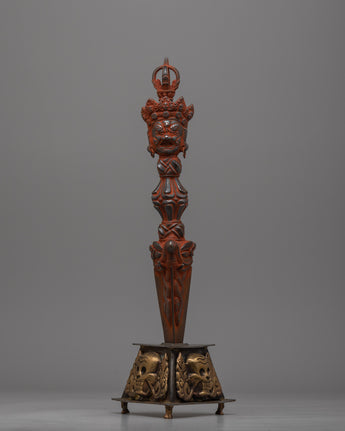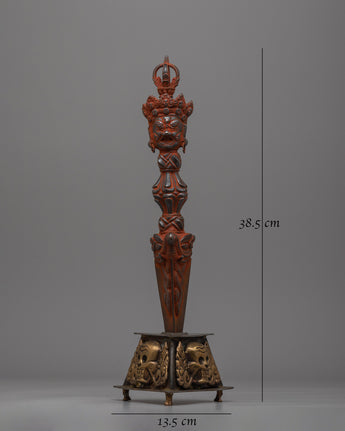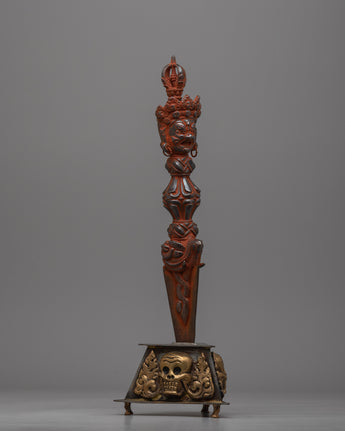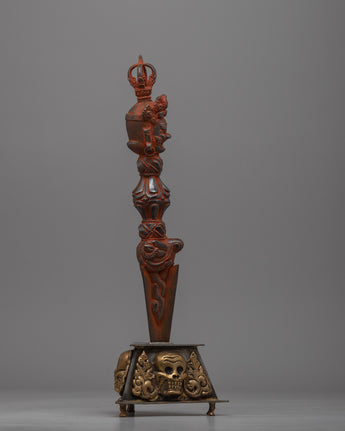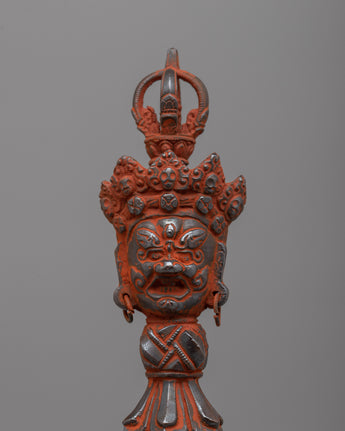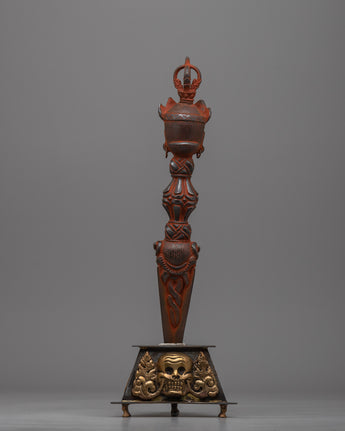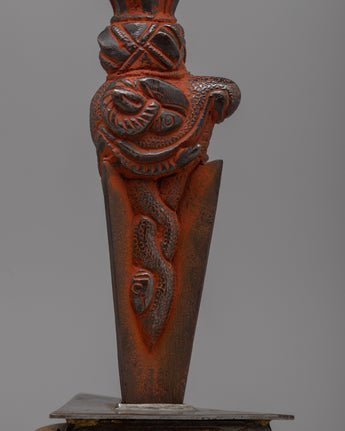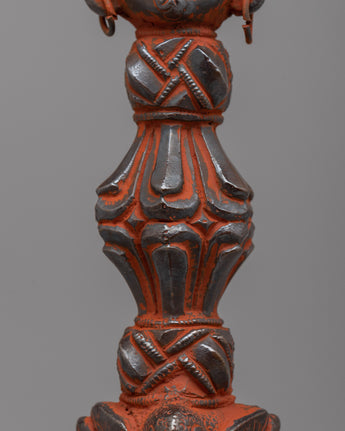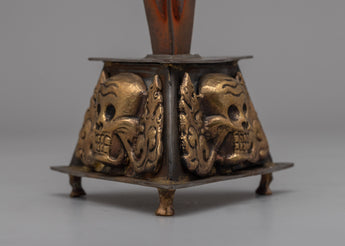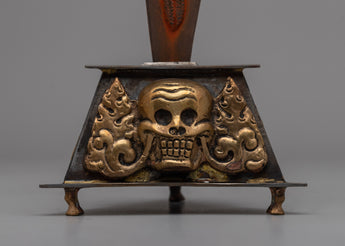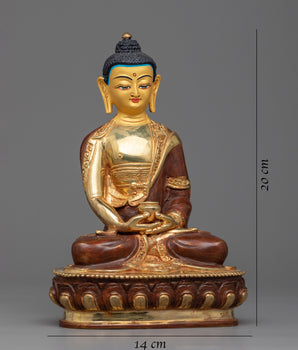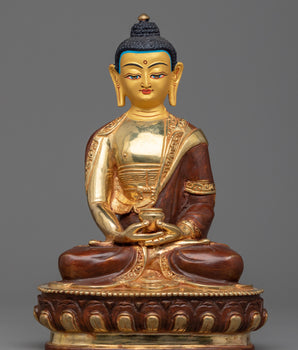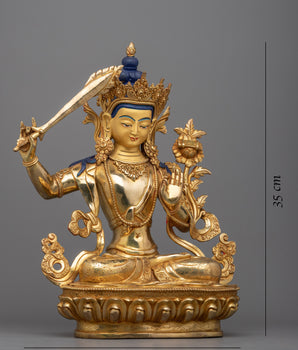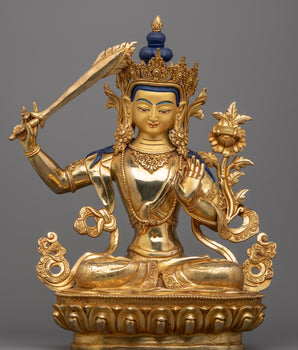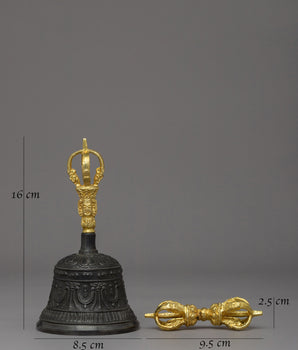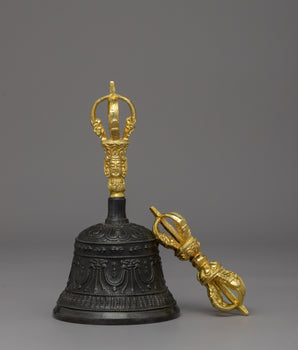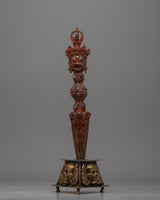
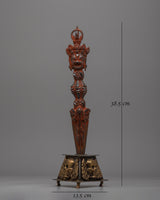
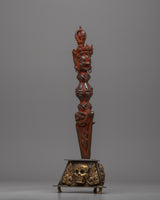
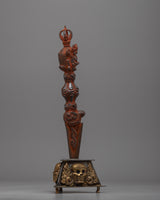
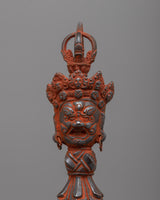
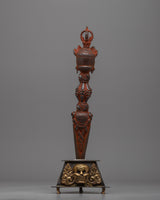
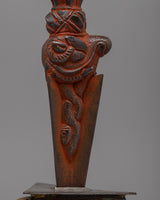
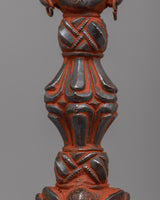
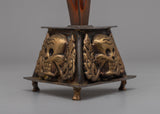
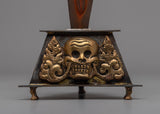
Traditional Buddhist Ritual Dagger Phurba | Sacred Tibetan Tool for Energy Work

100% AUTHENTIC

HANDMADE

FREE SHIPPING
Traditional Buddhist Ritual Dagger Phurba - Tool for Energy Clearing and Protection
About The Ritual Item :
This enormous Traditional Buddhist Ritual Dagger Phurba is made of brass with an antique finish and stands on a solid iron base, displaying a combination of artistic skill and spiritual meaning. This ritual item, measuring 38.5 cm in height and 13.5 cm in width and weighing 1.48 kg, is both visually appealing and substantial in size. Phurbas are significant in Tibetan Buddhism because they represent the power to control bad energies and overcome ignorance and barriers on the spiritual journey.
The beautiful workmanship of this Phurba emphasizes its religious design. The three-sided blade represents the unity of wisdom, method, and spiritual strength, penetrating delusion and transforming negative energies. The upper half has an artistically carved wrathful deity visage, emanating protecting power and divine authority, representing the loving energy that eliminates spiritual difficulties. The iron base, decorated with carved skull designs, signifies life's impermanence and acts as a reminder to let go of attachments and embrace spiritual truths.
Spiritually, the Phurba is more than just a ritual tool; it is a powerful symbol of the transformational energy of Buddhist meditation. Used in ceremonial and contemplative rites, it represents the defeat of inner and outer demons as well as the attainment of enlightenment. This Phurba, with its antique finish and symbolic depth, is a timeless example of spiritual and artistic brilliance.
Introduction To The Phurba :
The ceremonial dagger (Sanskrit: Kila; Tibetan: phurba) is important for expelling evil and is thought to be especially effective in neutralizing the forces that obstruct Tantric Buddhist practice. It has ancient origins, first appearing in the Indian Rg Veda as the core blade of the vajra used by Indra to destroy the primordial cosmic snake Vritra. Kila, meaning peg or stake in Sanskrit, was most likely associated with Vedic sacrifices. Meditation on the Vajrakila Tantra, an early Indian scripture first promoted in Tibet in the eighth century by Padmasambhava, one of the founding teachers of Tibetan Buddhism, is used to invoke the three-headed Vajrakila Buddha.
--------------------------------------------
Size: 38.5 cm(Height) x13.5 cm(Width)
Weight: 1.48 kg
Material: Brass Body, Iron Base
--------------------------------------------
How to set up your own Buddhist Shrine?
Find a clean, quiet, and uncluttered spot.
Set up an altar table, and cover it with an altar cloth that calls to you
Place your sacred item (statue, thangka, or a picture of Buddha) at the center.
------------------------------------------------------------------


